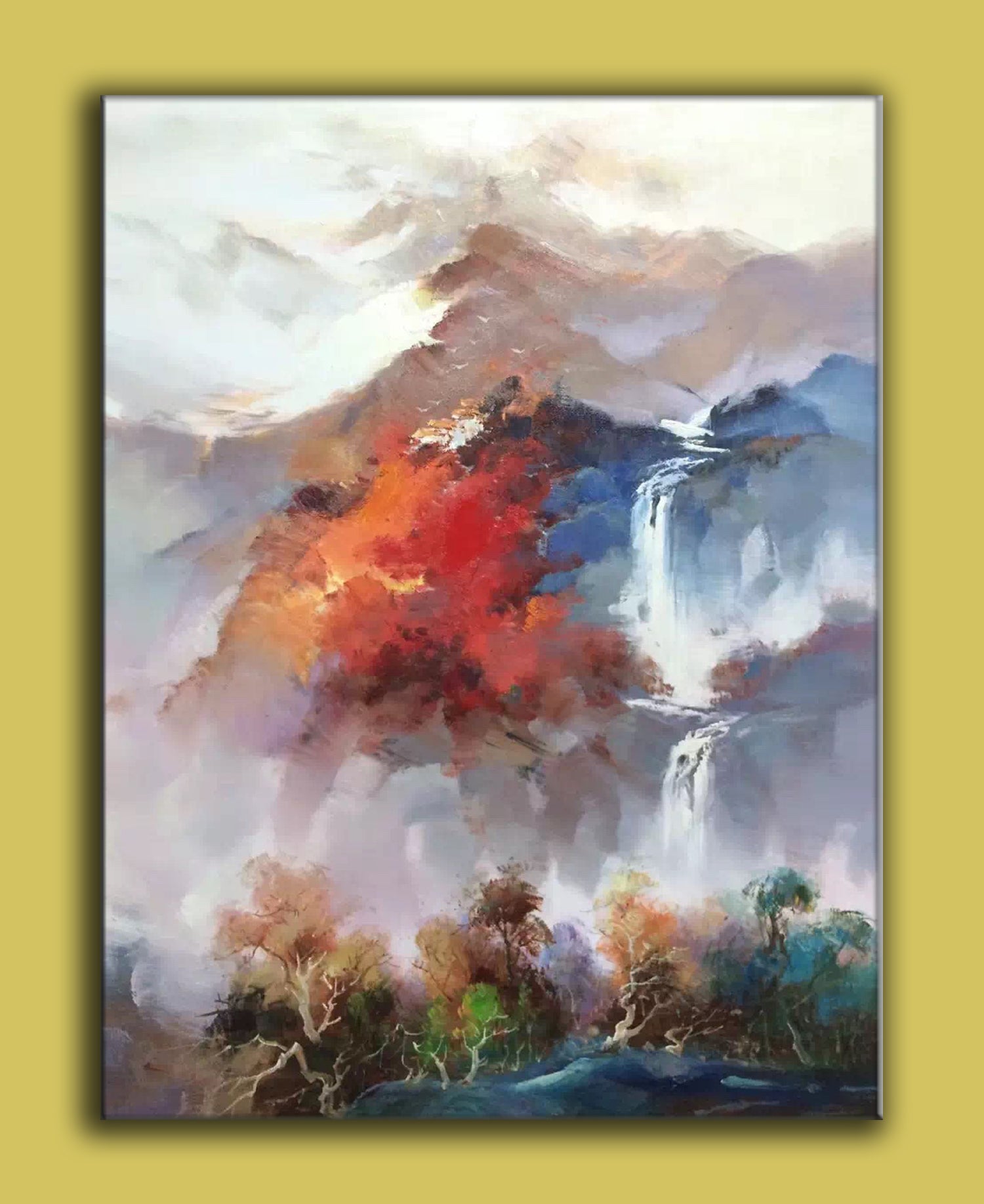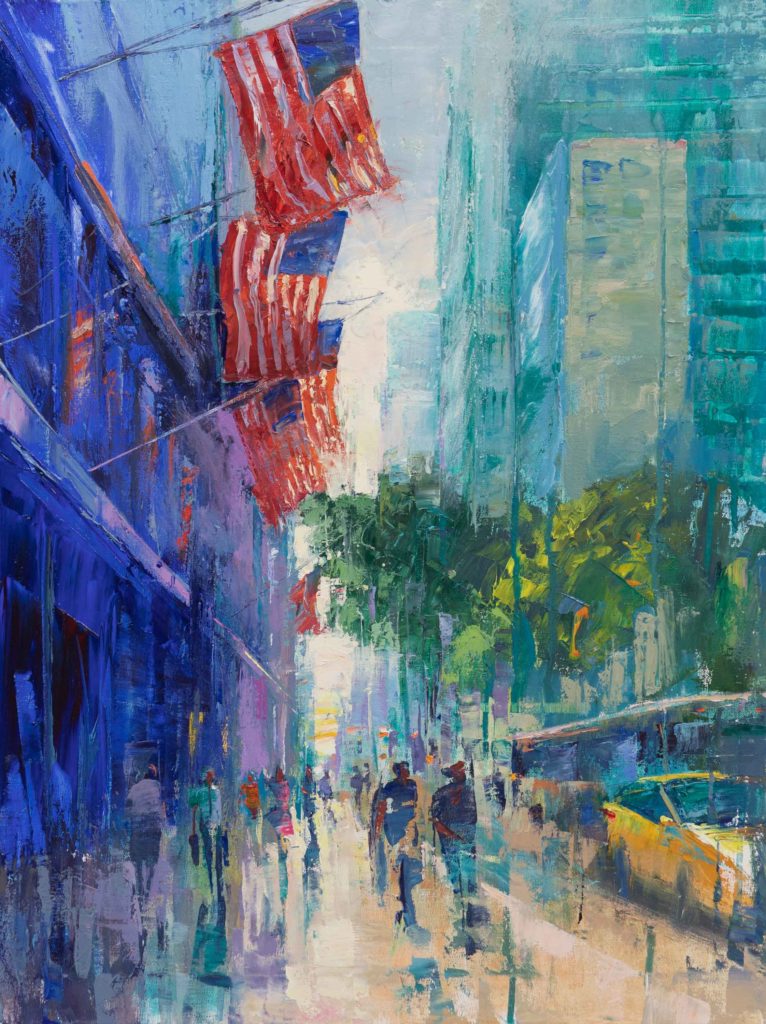Checking out Everything About Oil Paintings: A Guide to Comprehending Their Elegance and Worth
Oil paints have captivated target markets for centuries, supplying a glance right into the creative mastery of various eras. Their abundant background is linked with innovative techniques and extensive psychological expression. Comprehending the products and techniques behind these artworks can boost gratitude. Additionally, the marketplace for oil paints provides opportunities for capitalists and collection agencies alike. As one explores this remarkable globe, the question arises: what makes an oil paint really important?
The History of Oil Paint: A Journey Through Time
Oil painting has origins that date back to ancient times, it genuinely thrived during the Renaissance, when musicians discovered its adaptability and rich shade potential. Early instances can be traced to the 7th century, with methods progressing especially throughout cultures. The tool became famous in Northern Europe in the 15th century, particularly with the jobs of artists like Jan van Eyck, that spearheaded its use for in-depth realism and vivid colors. This period marked a separation from tempera paints, enabling for better depth and structure. As oil paint spread, it influenced many musicians, leading to work of arts by renowned figures such as Leonardo da Vinci and Rembrandt. The tool's legacy continues, shaping the art globe well into contemporary times.
Understanding Oil Repaints: Products and Techniques
As artists check out the globe of oil paints, they run into a diverse range of products and techniques that specify this medium. The primary components of oil paint include pigments, which supply shade, and drying out oils, such as linseed, that bind the pigments and facilitate application. Various additives can customize the paint's appearance and drying out time, enhancing adaptability. Techniques like glazing, where transparent layers are developed up, and impasto, which includes using thick paint, enable for various aesthetic effects. Additionally, the use of brushes, palette knives, and even fingers can produce special appearances and coatings. Recognizing these techniques and materials enables artists to fully express their creativity and achieve the desired impact in their artwork.
The Duty of Shade in Oil Paints
Shade plays a crucial duty in oil paintings, influencing both visual allure and psychological resonance. Understanding shade theory basics, consisting of the connections between colors, can enhance a musician's capability to convey state of mind and atmosphere. In addition, grasping color blending methods permits greater deepness and richness in a paint's combination.

Shade Concept Essential
Recognizing shade concept is necessary for musicians working with oil paints, as it forms the foundation for developing aesthetically appealing and harmonious compositions. Color theory incorporates the research study of exactly how shades connect, the color wheel, and the relationships in between main, secondary, and tertiary shades. Artists make use of complementary shades to improve contrasts and create prime focus, while comparable colors promote unity and cohesiveness within an item. Furthermore, the concepts of awesome and cozy colors affect the perception of depth and room in a painting. Grasping these principles permits artists to adjust color effectively, assisting the audience's eye and connecting their intended message. Proficiency of color theory ultimately enhances an artist's capability to convey feelings and ideas with their work.
Psychological Effect of Shade
The emotional influence of color in oil paints plays a crucial duty in how viewers view and connect with artwork. Colors stimulate specific feelings and moods, affecting the visitor's mood. For example, cozy tones like oranges and reds can produce a feeling of heat and power, while cool tones such as blues and environment-friendlies frequently stimulate peace or introspection. Artists tactically select shade schemes to improve narrative components, directing the target market's emotional trip. The saturation and contrast of colors better amplify these impacts, attracting focus and developing emphasis. Ultimately, the interplay of shades in oil paints not just boosts their aesthetic charm yet additionally functions as a powerful medium for emotional expression, enriching the audience's experience and interpretation.
Color Mixing Techniques
While lots of elements of oil painting add to the total make-up, grasping shade blending strategies is vital for attaining desired effects and depth. Color mixing can be come close to with various methods, including the subtractive and additive processes. Additive blending entails integrating shades of light, while subtractive mixing relies upon pigments, where colors blend to produce new shades. Musicians often use a limited palette to develop harmonious jobs, recognizing the partnerships between primary, second, and tertiary colors. Strategies such as glazing and scumbling further improve deepness and luminance. By masterfully blending shades, an artist can evoke emotions, create prime focus, and attain a sense of realistic look, ultimately elevating the paint's visual and emotional influence.
Famous Oil Painters and Their Iconic Functions

Famed for their mastery of color and method, oil painters have actually produced some of one of the most celebrated artworks in history. Popular artists like Vincent van Gogh mesmerized target markets with his stirring brushwork in "Starry Evening," while Claude Monet's "Impact, Sunrise" prepared for Impressionism. Leonardo da Vinci's "Mona Lisa" continues to be a long-lasting icon of artistic genius, showcasing his skill in catching human expression. Rembrandt's "The Night Watch" illustrates his innovative usage of light and darkness. Other notable numbers consist of Pablo Picasso, that transformed modern-day art with his strong trial and error in jobs like "Les Demoiselles d'Avignon," and Georgia O'Keeffe, whose lively representations of flowers and landscapes assisted define American innovation. Each musician's special style contributed substantially to the oil paint landscape.
Just how to Review the High Quality of an Oil Painting
Assessing the quality of an oil paint includes a careful assessment of workmanship methods, as well as an analysis of color and make-up. Observing brushwork, layering, and the application of paint can expose the artist's ability degree. Furthermore, the interplay of shades and the general arrangement of components contribute considerably to the painting's visual value.
Analyzing Workmanship Techniques
A thorough evaluation of craftsmanship strategies is essential for establishing the high quality of an oil painting. Evaluators must first take a look at the application of paint; thick, distinctive brushstrokes might recommend an experienced hand, while extremely consistent applications might indicate an absence of depth. oil paintings for sale. The layering strategy is likewise essential; the presence of lusters and differed thickness can boost brightness and intricacy. In addition, the quality of the materials utilized, such as the canvas and pigments, plays a considerable function in durability and total aesthetic. Attention to information in aspects like edges and shifts in between colors shows the artist's dedication to their craft. Inevitably, these methods add to the painting's psychological influence and market price, acting as signs of the artist's ability and intent
Analyzing Shade and Composition
While reviewing the high quality of an oil painting, one should concentrate on the interaction of color and composition, as these components are fundamental to the artwork's overall impact. Color options can develop and stimulate feelings state of mind; as a result, the musician's scheme must be examined for harmony and contrast. A well-balanced structure directs the viewer's eye and develops a sense of unity. Artists commonly use strategies like the regulation of thirds or leading lines to enhance aesthetic interest. Additionally, the use of light and darkness can include depth, improving the three-dimensionality of the paint. Eventually, a successful oil painting marries color and make-up, involving the visitor and welcoming a deeper gratitude of the artist's vision and strategy.
Taking care of and Preserving Oil Paintings
Correct treatment and preservation of oil paintings is important for maintaining their honesty and long life. To secure these artworks, it is important to show them far from direct sunlight, which can trigger fading and staining. Preserving a steady setting with regulated temperature and moisture additional aids in avoiding damages. Cleaning should be done delicately utilizing a soft, dry towel, avoiding any harsh chemicals that could harm the paint or varnish. Normal inspections for indicators of damage, such as flaking or fracturing, are suggested. When saving or delivering oil paints, appropriate padding and framework are needed to avoid physical injury. Ultimately, persistent care contributes to the visual allure and value of oil paints over time.
The Marketplace for Oil Paintings: Gathering and Investing
Recognizing the market characteristics for oil paints is vital for financiers and collectors alike. The worth of these artworks is influenced by different elements, consisting of the artist's reputation, historical value, and present trends. Enthusiasts typically look for pieces that reverberate personally while taking into consideration possible gratitude in worth. Galleries and public auctions function as key venues for buying and selling, with costs changing based upon need and rarity. Buying oil paints requires research right into the marketplace, as well as an understanding of authenticity and provenance. Furthermore, arising artists might supply chances for substantial returns, while established names can command high rates. In general, a strategic method to gathering can yield both visual enjoyment and monetary rewards.

Regularly Asked Concerns
What Are the Ecological Impacts of Oil Painting Materials?
The ecological influences of oil paint materials consist of the release of unpredictable natural substances (VOCs), damaging waste generation, and source removal for pigments. These factors add to contamination and environmental deterioration, elevating problems among eco conscious artists and consumers.
How Do Various Canvases Influence Oil Paint Outcomes?
Different canvases affect oil painting results substantially. Structure, surface, and absorbency top quality can modify paint application, drying out times, and shade vibrancy. Musicians often pick particular canvases to accomplish wanted effects and improve their imaginative expression.
Can Oil Paintings Be Restored if Harmed?
Oil paints can certainly be restored if harmed. Specialist conservators utilize various methods to fix rips, clean surface areas, and address staining, making certain that the art work keeps its original beauty and worth for future generations.
What Are the Indications of an Original Oil Paint?
The indications of an original oil paint include visible brush strokes, appearance variations, and an uneven canvas weave (oil paintings for sale). In addition, authenticity might be confirmed through provenance, signatures, and the existence of a varnish layer special to oil tools
Exactly How Has Modern Technology Influenced Modern Oil Paint Techniques?
Modern technology has actually greatly influenced modern oil painting techniques by presenting electronic devices for preparation, improved materials for structure and longevity, and on the internet platforms for sharing and marketing art, therefore broadening musicians' innovative opportunities and audience get to. Oil painting has roots that date back to old times, it really flourished throughout the Renaissance, when artists found its flexibility and abundant color capacity. The emotional impact of color in oil paints plays an essential role in how viewers link and perceive with artwork. While many facets of oil paint contribute to the overall make-up, grasping color blending strategies is crucial for attaining preferred effects and deepness. Examining the high quality of here an oil painting entails a cautious evaluation of craftsmanship methods, as well as an analysis of shade and structure. While reviewing the quality of an oil paint, one should concentrate on the interaction of shade and structure, as these elements are basic to the artwork's total impact.